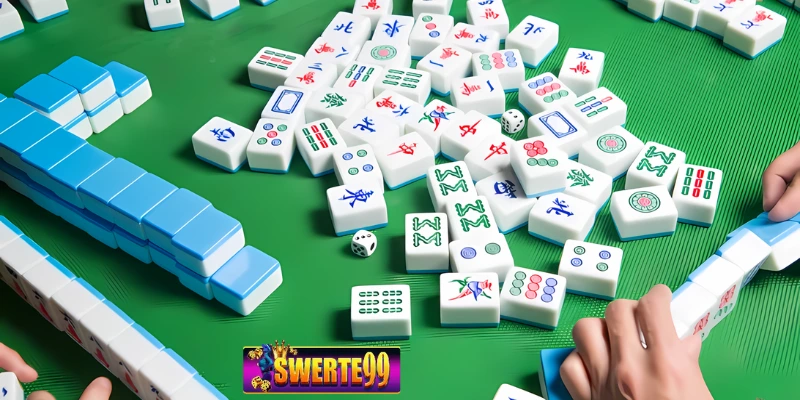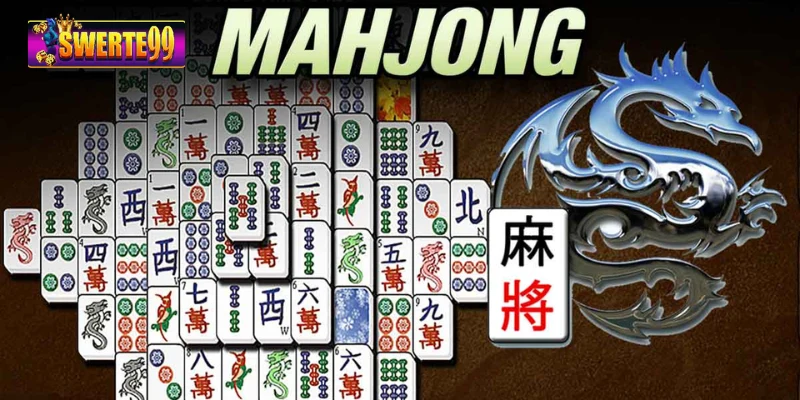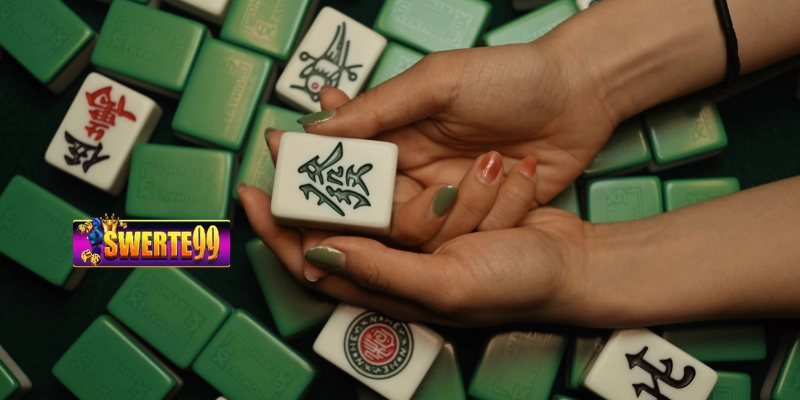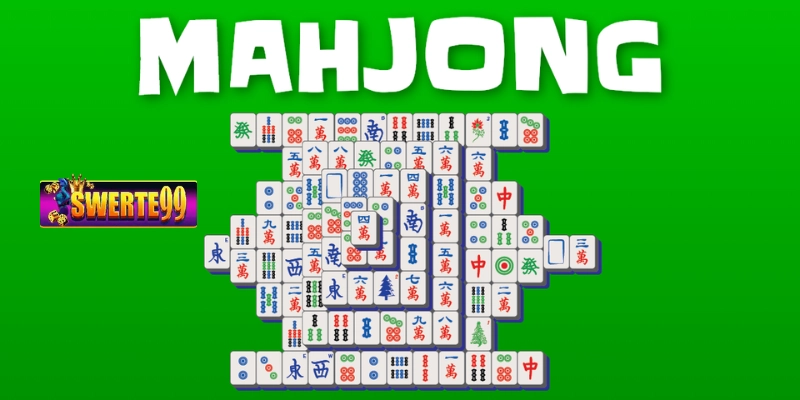Mahjong is a tile-based game that was developed during the Qing Dynasty in China, and plays between strategy as well as luck. The tiles are melded into specific combinations of groups of identical or consecutively numbered shapes called sets, runs and heads (eyes) in the winning hand format. The game is complex because there are many melds and the players interact in a way. Mahjong requires strategic thought, observation and playing your moves based on what you anticipate others will play.
What is Mahjong?

Mahjong (tracing its roots to China in the 19th century, originally played by the rich and later becoming a craze) Polyamines for up to four players with 144 exquisitely detailed tiles, employing both chance and skill. In this regard it happens to be also just like poker, strategic and at the same time a bluffing game where players draw tiles. Except that instead cards are drawn from a variety of combinations using simulations, there is an overlap in complex interactions, by its very natural plane system; unlike anything. Restrictiveness Perpendicular to tile, Hence doping.
It offers new highs and lows for players as it requires decision, risk assessment and social dynamic through each turn. You can study it endlessly, whether you know all about Mahjong or are a complete beginner!
Mahjong in Historical Context
The exact origins of Mahjong are in fact unknown, though the most generally accepted theory is that it was developed during the Qing Dynasty beside time mid-way through the 19th century. It could have been descended from the old Chinese card games or western ones during the colonial era. Different variations of it in different areas at festivals and family events, the whole bit!
Mahjong then spread to Japan in the early 20th century, and also reached America and various parts of Asia creating different styles. It is now played around the world with unique followings from continent to continent.
Why Mahjong Matters Culturally
An integral part of Chinese culture, mahjong represents socialization and filial relations ethos as well as reflects socio-cultural values in guanxi (social relationships) type respect for elders/ older participating relatives and significance if coming together. The game is a way of building connections and relationships, played alone in city clubs or cafés, in families.
Mahjong is already recognized worldwide, as evidenced by tournaments and competitions where top players compete against each other to show off their mad skills. Though it is an overwhelmingly negative concept we should all fear and dread, Its advent has actually inspired works of art like books and movies that only serve to further cement its importance in our world. Even in its evolution, Mahjong is a testament to how games can help link people through unity and fellowship over some culture predicaments.
How do you play Mahjong? Step by step

There are a lot of steps that need to be taken in order for players to play Mahjong and craft their way through the intricate mechanics of the game. These steps are important for newcomers as well as experienced players, and they set up the stage of a successful game play. Following are the fundamental rules and principles that will enlighten you about how Mahjong is played.
The Standard Mahjong Game Rules
A regular Mahjong set consists of 144 tiles, and the suits are represented by unique symbols as winds or dragons. Players shuffle and stack the tiles into a central wall before playing. Similarly, players sit counterclockwise with each one getting 13 tiles except the dealer who will pick up incorrect, a total of 14. The wall is composed of the remaining 43 tiles.
Players draw from the wall and discard tiles by turns, with discarded tiles placed into an openly available pile. Players aim to make melds: either pongs (three of a kind), chows, or kong (four of the same tile). One of the most exciting rules in canasta is that if a player throws tiles, other players can get hold of it to make runs, which leads to tons more strategy and competition.
In order to win, a player has to have four sets and three pairs as well which makes fourteen tiles. Each hand has its own value on points, and this is where the fun comes in! Its environment changes all the time, so players should draw cards and get rid of them before it is too late to sell.
Setting Up the Game
Players must only decide on a Mahjong variation e.g. Chinese Classical, Japanese Riichi, or American Style of play which correspond to the changes in the rules and regulations as listed above before commencing their business. Know the scoring systems and winning hands for your chosen type (this will include any bonus points or penalties).
Mix the tiles very well and continue to place them in such a way that they will be assembled into rows, this acts as a wall. After it was set up, follow the corresponding rule variation for dealing tiles to each player.
Drawing and Discarding Tiles
Mahjong: Players draw tiles from the wall one at a time. The player to the right of the dealer goes first, taking a tile and adds it to their hand. Once the player had drawn, they would then play a tile from their hand and decide whether to keep it or discard it (to be used as great leader block scores) face up into the 5×4-rows of normal world tiles.
This adds another layer of strategy as players must weigh the consequences of discarding tiles. Ridging a generally helpful tile might be to the upside of an opponent, by giving them access to meld their hand, though holding onto lesser-helpful tiles can poleaxe growth. Balance personal melds with stopping opponents’ combinations.
If a tile discarded by your opponent makes a meld in your hand, you can call out “pong,” “chow,” or “kong” to claim the tiles for yourself. This makes things more complicated, demanding caution and knowledge of the actions of rivals.
Going Out: Creating Melds and Winning Hands
In Mahjong, the object of the game is to build a complete hand of four sets (usually 4), and one pair-a total. Melds are made from a player’s hand or claim of discards.
The melds formed need to match the formation of accepted meld formations according to their Mahjong variation. This is the rule in some variations, while others allow (concealed) melds only.
A player wins when he makes a complete hand and reveals his face-down tiles. Scores are determined from the melds, of which there is a variety of them, and different combinations would give you more score. There will rarely be a perfect opportunity to make this move, since Mahjong is so dynamic and no two rounds of gameplay are the same.
Types of Tile in Mahjong

Mahjong is known for the large number of tiles with specific symbols and features. This is an important issue for gameplay, as these tile types make up the construction of melds and winnable hands. For this part, we will be looking at the various tile types in Mahjong i.e suits, winds, dragons and special tiles.
| Types | Tiles | Description |
| Suits | Bamboo | Bamboo stalks (1-9), symbolizing growth and resilience. Versatile for forming chows and pongs. |
| Circles (Dots) | Circular designs (1-9), representing coins. Valuable for forming melds due to wide combination possibilities. | |
| Characters | Chinese characters (1-9), symbolizing aspects of life and culture. Prestigious and high-scoring. | |
| Winds | East, South, West, North | Represent four cardinal directions. Honor tiles with unique symbols. Used to form melds and influence scoring. Matching seat wind yields bonus points. |
| Dragons | Red Dragon | Most valuable, yielding significant points in a winning hand. |
| Green Dragon | Valuable but typically offers fewer points than Red Dragon. | |
| White Dragon | Blank tiles, honor tiles that contribute to scoring when used in melds. | |
| Special Tiles | Flower | Depict various flowers. Drawn from a separate set, earning bonus points when collected. |
| Season | Represent Spring, Summer, Autumn, Winter. Function like Flower tiles, offering additional scoring opportunities. |
The 3 Mahjong Strategies You Should Understand
Mahjong is a game of luck at the end of the day, but it still requires timing and foresight to win. The following are the three most important strategies that will help you to do better in your game.
Read the Tiles: Melding from Discards
Keep an eye on what tiles opponents discard to get a better idea of their strategy. Constant discards of Bamboo tiles focus on Circle or Character tiles. If you discard a tile that could help an opponent complete their meld, then perhaps it serves as blocking. You can also make informed choices to keep or discard tiles by observing the timing of what has been discarded, which is a clue that reveals strategy shifts.
Meld Optimization: Making the Most of Your Combinations
Examine your tiles for combinations that work best in hand. Although forming a pong (three of the same tiles) may be one less tile you need to complete Mahjong, creating a chow hand can open up more potential future draws. The Kong (four of a kind) blocks other players from having access to those tiles. Find the sweet spot between optimizing balance and a sense of surprise in not revealing melds too early.
When to Hold and When To Fold: Timing and Risk Assessment
Mahjong is a game of timing. Figure how valuable a tile might be to you and also think about the potential value for your opponents. You could give your opponent an edge by discarding a tile they need to finish a meld, while holding onto one too long might result in missed opportunities for you. To make things worse, you are able to win handily by controlling the total in this way without even running out of points (which happens very rarely). Once discovering that amount is relatively easy but figuring out how many more props can be made or have already been solved very likely requires counting counters.
Conclusion
Mahjong is just the right balance of luck and skill to provide a cognitive challenge with social interaction. Mahjong veterans and complete novices are welcomed with easy to learn, yet deep strategic gameplay inspired by the original game from ancient times. But as I said, mastery takes practice; with every game you play your appreciation deepens and friends are made. Mahjong spans borders and generations, providing memories that last a lifetime. Grab your friends, move around some pieces and see how Mahjong unfurls in front of you.

